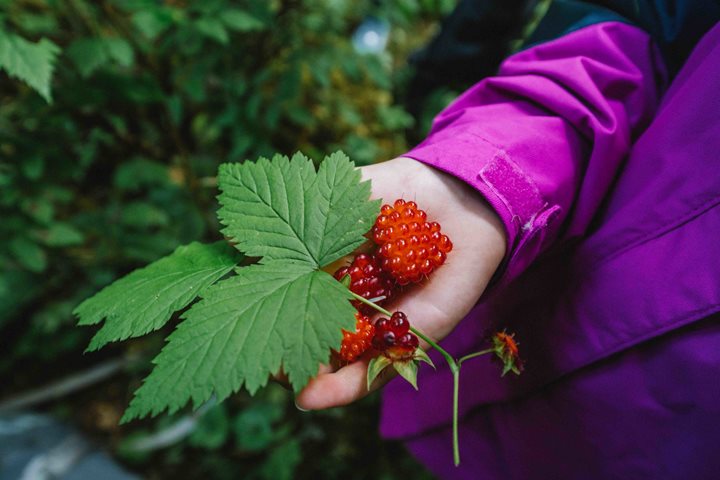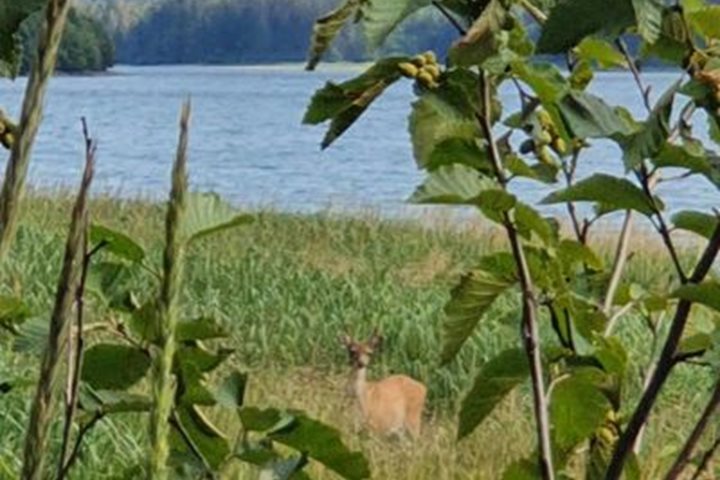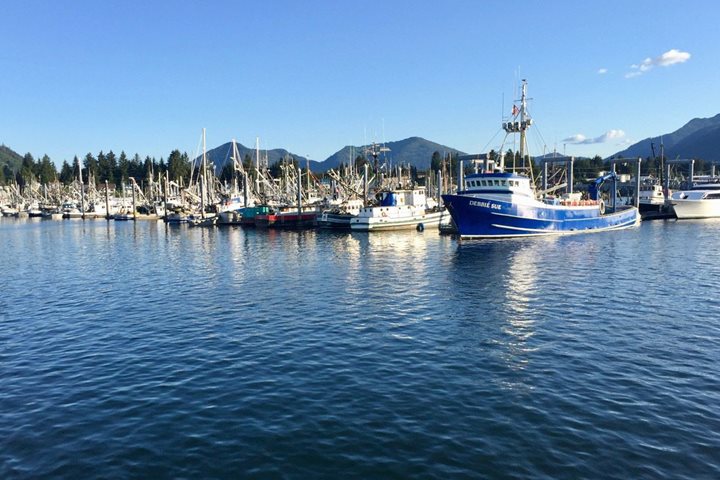It’s amazing how fast a day can change – not the weather – but the energy. OK, we’ll admit that upon waking up this morning, we might have been a bit disappointed with heavy mist and clouds right down to the water line. But it wasn’t long before the action began. We boarded our trusty zodiacs and zoomed into the swirling waters of the “washing machine.” That’s what the locals call the fast currents that bring water from the open ocean into the narrow northern entrance of the Inside Passage. Who would have guessed from our calm anchorage that nearby there would be so much life! There were unbelievably cute sea otters (with pups), stately bald eagles, humpback whales blowing in the distance, harbor porpoises gliding past, tufted puffins on the wing and did I mention the sea lions? They were the true stars of this morning’s outing. It is fall in Southeast Alaska and that means salmon. The spawning cohos (also known as silvers) are just beginning to leave the ocean enroute to the streams of their birth where their life cycle will be completed. But they have to get past the Steller sea lions and that’s not an easy task. But the sea lions aren’t picky eaters, they’ll eat halibut, salmon, pollock, flounders and even an octopus if they can find one. A few of them appeared curious and when they approached, we could easily see that yep, they could actually weigh more than 1,000 pounds!
In the afternoon we explored George Island. In WWII this site was chosen for a gun emplacement. During the war, there was hand-to-hand combat out on the Aleutian Island Chain. Strategists were concerned that the Japanese might deploy war ships headed directly for Alaska’s Inside Passage. If so, the enlisted men of George Island just might be the first to encounter them. So in 1942 a 6” gun (originally from a WWI French Frigate) was installed. Never fired in battle, it was decommissioned in 1944. During our hikes there were tales of the how the war affected Alaska giving us the Alaska-Canada Highway, airstrips in remote towns, women aviators and at least 17 men with memories of moving an 18-ton gun across an island with hard work, ingenuity and determination.
While our divers were off taking some undersea footage for our evening recap, Bette Lu explained the interesting story of how a fish can “feed a forest.” Sleep well shipmates – but don’t linger too long in bed tomorrow morning, we’ll wake up deep in the heart of Glacier Bay National Park!







